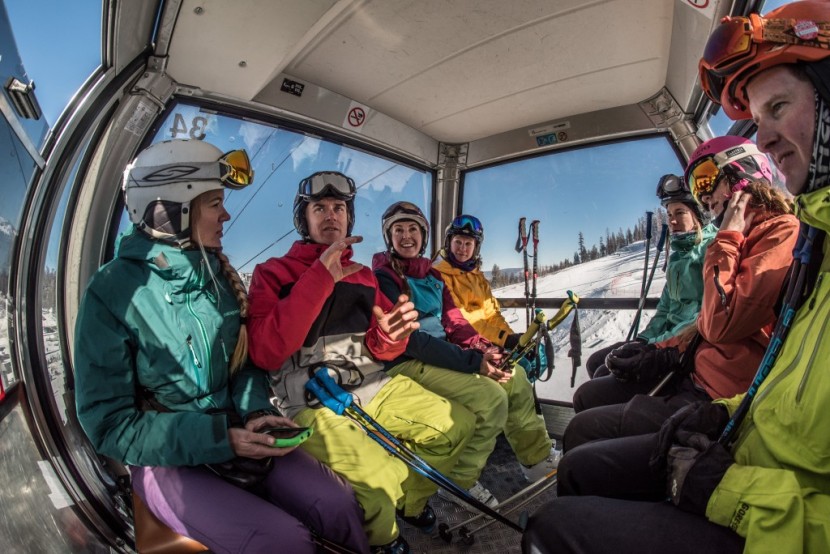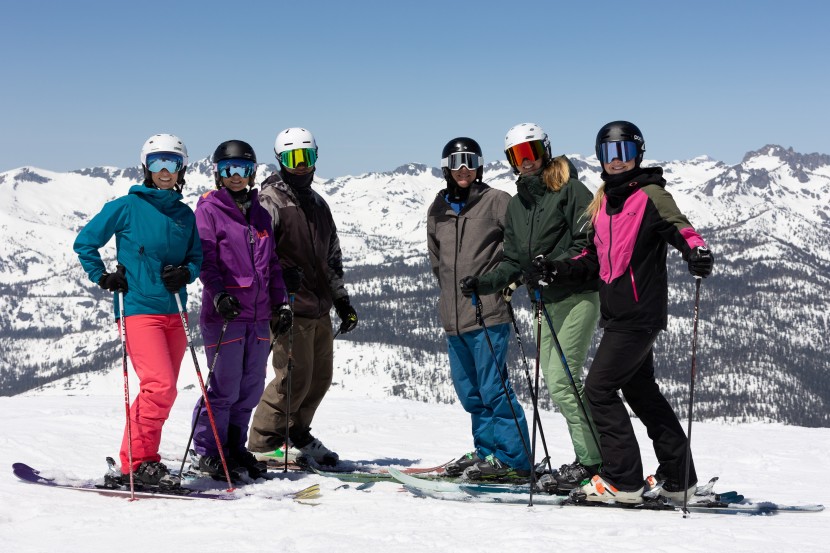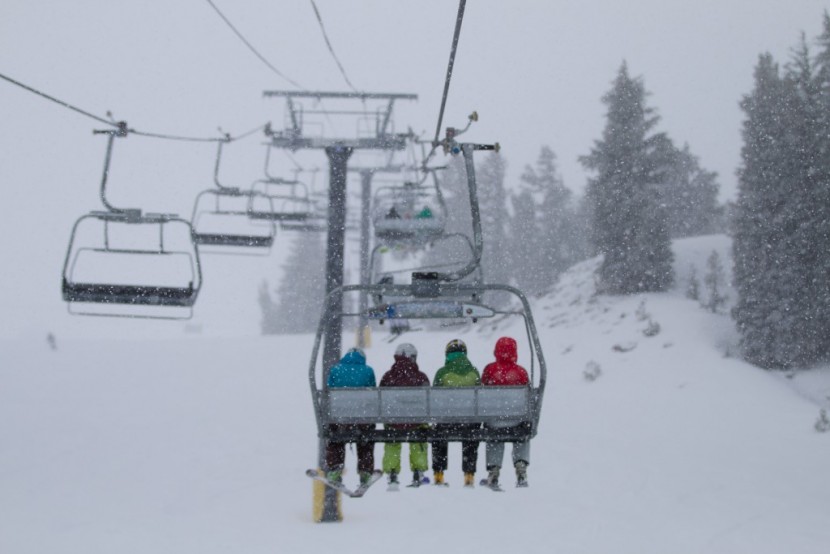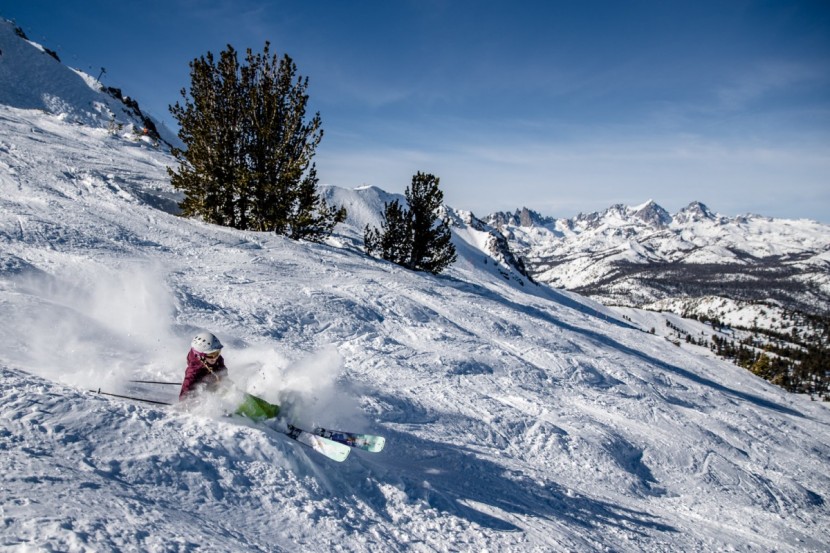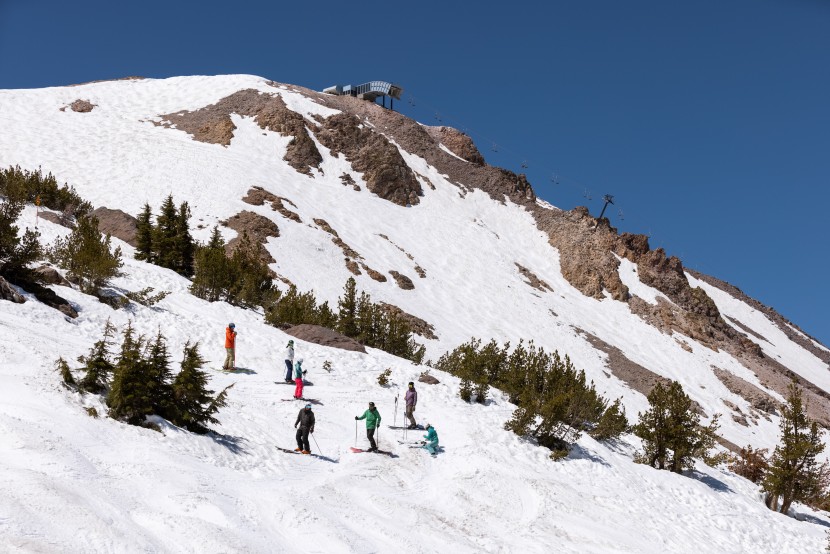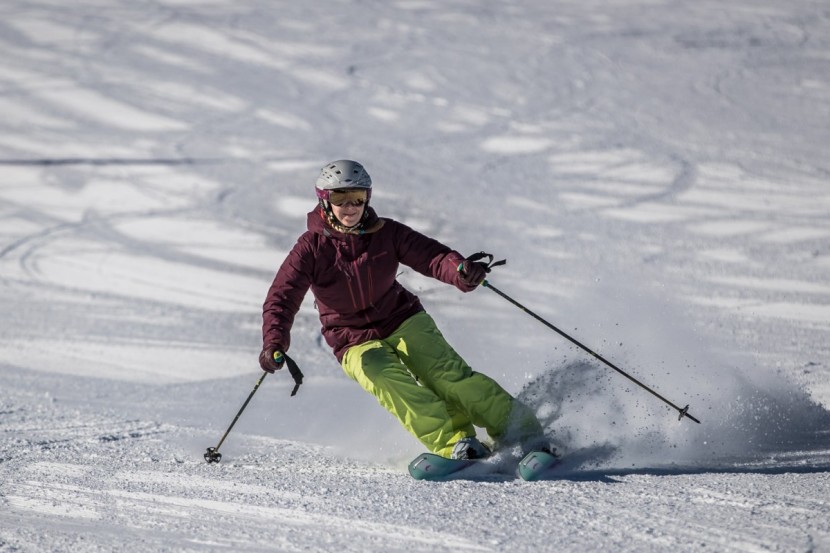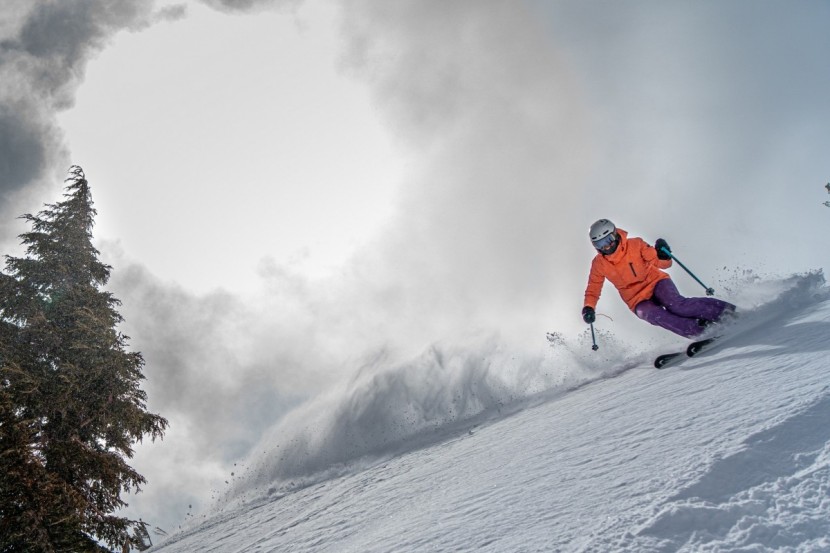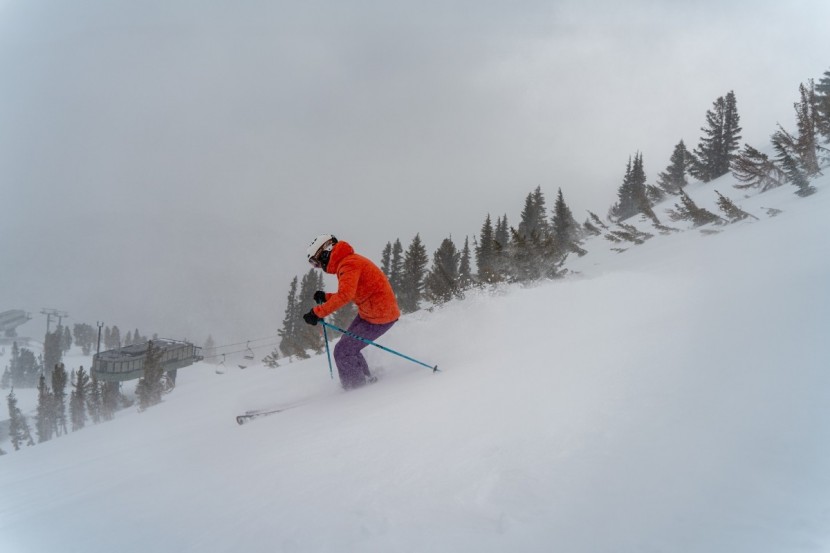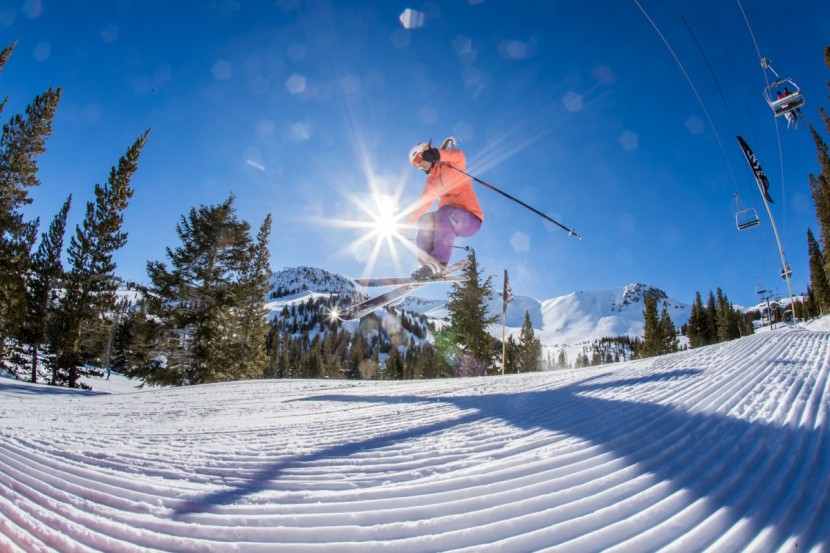The Test
To test the best women's all-mountain skis, we have tested new skis back to back while compiling data and observations from over a decade of testing seasons. Unlike other reviews that note performance after only a couple of runs within the same snow conditions, this review examined products in various terrain and conditions, with various skiers, over multiple months (and sometimes years) to bring you the best possible review.
The Team
We worked in a collaborative format, assembling a team of advanced and expert ladies who work on skis to take the competitors through the wringer. We evaluated these test models over multiple seasons at Mammoth Mountain, June Mountain, Kirkwood, Palisades Tahoe, Mount Rose and Alpine Meadows in California. We also headed out for side trips to Big White Resort in Canada, Snowbird, Alta, Deer Valley in Utah, and finally on a heli-ski trip in Alaska. Our lady testers span a spectrum of experience, from hard-charging patrollers to detail-oriented instructors, to devoted recreational ski bums.
Product Selection and Preparation
We began by researching the market, noting what respected manufacturers offer in the all-mountain category (without excluding new and honorable independent companies), which products are bestsellers, and which products had specs that seemed to indicate likely versatile performance. We selected innovative products, from trusted manufacturers that we hoped would perform well.
For our women's all-mountain ski review, we partnered with Kittredge Sports in Mammoth Lakes, California. Kittredge mounted all of our bindings for us, detuned each contender right out of the wrapper with an identical tune, and gave each pair tunes throughout the winter to make sure they all stayed in excellent shape as we continued to use them over and over.
We mounted each with the same binding - the Marker Griffon demo binding - which allowed us to adjust them so that the entire team could test each model. This binding sits close to the surface of the ski, allowing for a good feel for the ski while being burly enough to allow hard carving. Having the same bindings allowed us to objectively evaluate performance without factoring in a difference in the bindings.
We Purchased All of These Skis Ourselves
Just like in every GearLab review, we purchased the equipment we reviewed here on the retail market, and the reviewers did not receive any gifts, payments, or freebies from manufacturers. This approach sets us apart from other comparative reviews. While private, one-off reviews are abundant on the internet from users that have purchased their own, we know of no other comparative, comprehensive category review where the reviewer purchased all of the contenders. Most similar reviews by magazines and blogs review advertisers' products. We take the integrity of this review very seriously and have done our best to conduct it in a fair, unbiased manner.
Testing Methods
We started by weighing each of these models on our scale to provide an accurate weight spec. Then we skied — a lot.
Even with the dry California winter we had in '14/'15, the ladies of our team tallied a combined 300 days on our test models that year and about 100 days combined in '15/'16, with the five additions to the review.
We got lucky in '16/'17 with mega-dumps so that we could try them out in deep and variable conditions. Again in '17/'18, we had some excellent early season storms and a decent base on which to feel things out. Once again, for '18/'19, we lucked out with a big five feet at Thanksgiving that gave us a ton of variable snow to ski to produce the review for the Christmas buying season. Later that season, we received great spring conditions and fresh dumps to add new skis to the bunch.
Spring 2020 made things trickier for us, as we had already begun testing a couple of skis when the pandemic hit and resorts were closed. We completed that review in December 2020 and geared up in February 2021 to start skiing the upcoming season's skis, and got back on track reviewing the next season's skis in the spring of 2022.
We had a wild Sierra season in '23-'24 – Mammoth received the most snow in its history with over 700 inches. In between shoveling roofs and tunneling into second-story condos, we had more than ample opportunity to test these skis in plenty of powder. This past season was a solid spring for snow levels, and our testers were able to test the new additions through Memorial Day weekend.
We went out in all conditions throughout these many seasons, from icy hard-packed snow and death cookies to slushy spring mush, from perfect morning groomers to late afternoon bumps, as well as two-foot powder days — both light champagne and Sierra Cement.
We tried each model in every situation we could, railing the tightest, fastest turns and intentionally seeking bad conditions to see how they would handle. We had ski-a-thon days where we tried different models back-to-back, switching after a few runs for side-by-side comparison within the same conditions. We also lent our test pairs to other ladies (and some men) with varying skills and abilities and got as much feedback as possible on score sheets. We considered all of these opinions as we compiled the final scores.
Ultimately, this review is a matter of opinion. Still, we have collected and compiled many educated opinions to present our observations clearly and directly, hoping that our research will help you find the product best suited to you.
Stability at Speed
This metric can be a fun quality to test for, but only when the skis perform well. We tended to rate this metric early in the morning when the snow was hard and at its fastest. We took each ski to the top of the steepest groomer we could find and tried to make as few turns as possible to the bottom. Especially on the hard-pack and groomed snow, we looked for whether the skis chattered underneath us or flexed consistently and whether we felt like we could push the envelope or needed to slow down to feel safe. We took notice of whether the edges held their grip or slid out into a skid and whether the tips were flapping at high velocities or they were quiet.
Carving Ability
This test is another one that took place primarily early in the morning on fresh groomers to give each ski a chance to shine in prime conditions. We took each pair onto crisp corduroy, got some speed up, and arced clean turns down the run. We always reminded ourselves of the published turn radius of each ski. We then compared that numeric to how the ski felt while turning and questioned whether or not the metered value corresponded accurately to the sensation. We noted whether they tended to make a tighter or larger radius turn. At the same time, we jotted down whether the ski preferred to hold the edge or to butter and skid the turn instead. We noticed which skis were easy to carve a turn purely and which ones you had to force into a clean arc.
Powder Performance
These days were the glory days of ski testing. We were trading out skis every run or so on powder days to feel each ski's performance in the same type of snow condition since one storm may be different from the next in terms of water content and, therefore, lightness and ease of skiing. The main question we asked ourselves here was, “Do they stay afloat?”. Barring user error, we wanted to know if they could maintain some contact with the surface of the snow rather than constantly being buried beneath it. We noted whether the tips tended to dive down or could surf on top of the snow; even if the skis were often beneath the snow, we asked ourselves if they were still easy to turn despite being submerged. We then compared the sensations we felt with the specs for each ski and noted whether their width underfoot or tip shape contributed to what we felt.
Crud Performance
It's never difficult to find this type of snow to test on, which is why it's also so important that a ski performs well in this abundant terrain. We took all the skis to all varieties of crud - post-powder chunks, beautiful smooth wind-buff, sticky spring slush, and choppy wind-ravaged sastrugi. We wanted to find out how they held up in these tougher conditions; the main question is whether they are tough enough to withstand getting tossed around and hold their course in rough terrain. We would take each pair of skis out on the same run, one after the other, so that the type of crud was consistent. We tried to pinpoint where the ski's strength or weakness was stemming from - were the tips deflected, or was the whole ski weak and floppy? Is the ski charging through the chop, and is it absorbing the bounces before they reach your feet?
Terrain Playfulness
While this is a subjective metric, the consistent quality that runs through all the skis our testers found the most playful is their springy rebound after a turn. Therefore, we officially tested for this metric simultaneously as Carving, looking for that bounce-back that a great ski gives you when you pressure it and then release, particularly in a high-speed carved turn. We didn't only test for rebound within this metric, though. We took all of the skis all over the mountain - in the trees, off rock drops, in the park, and through the bumps - to see if they made us smile. Sometimes we noticed that the weight of a ski affected how joyous it felt; sometimes, it was the agility between sets of edges, and on occasion, it seemed to be an effect of the confidence they gave us.
Bumps
This category was an easy and fun one to test since we could take each pair of skis out on the same bump line in the same afternoon and feel the differences. We tested each pair in mellow blue-run bumps and gnarlier double-black lines and even found some springtime snake lines to challenge ourselves and the skis. We would find the same line and count how many bumps we could make it through on each pair without getting bucked out. We noted whether the ski's edge-to-edge quickness, responsiveness, or stiffness affected the ability to ride the line to completion.

